Introduction
In the rapidly advancing digital age, artificial intelligence (AI) has transcended beyond just being a futuristic concept to becoming a fundamental component in the strategic toolkit of modern businesses. As AI technologies weave their way through diverse sectors—ranging from healthcare and finance to retail and manufacturing—their profound impact on data governance emerges as a critical area of focus. Data governance, which involves the management and regulation of data assets, is becoming increasingly pivotal for organizations that aim to harness AI effectively to innovate, gain a competitive edge, and ultimately drive significant business value.
AI applications rely on vast amounts of data to learn, make predictions, and execute decisions. This dependency underscores the importance of robust data governance as the quality, integrity, and security of this data directly influence the performance and reliability of AI systems. For example, an AI model trained on poor-quality data can lead to inaccurate predictions, potentially resulting in flawed business decisions or even harmful outcomes, depending on the application. Thus, ensuring that data is well-governed becomes essential not just for operational efficiency but also for maintaining the credibility and accountability of AI systems.
Moreover, as the deployment of AI continues to expand, the complexities of managing data also escalate. Organizations face the dual challenge of adhering to strict data privacy and security regulations while striving to extract maximum value from data volume for their AI initiatives. Laws such as the General Data Protection Regulation (GDPR) in the EU and the California Consumer Privacy Act (CCPA) in the U.S. have set stringent guidelines on how data must be handled, emphasizing the need for compliance and the penalties for non-compliance. These regulations necessitate a comprehensive approach to data governance that is capable of addressing the unique challenges posed by AI, such as algorithmic transparency, data bias mitigation, and the ethical use of automated decision-making systems.
This guide delves deep into the intersection of AI and data governance, highlighting the crucial role that effective data governance plays in the deployment of AI technologies. Understanding this intersection is vital for organizations to not only prevent risks associated with data misuse or breaches but also to optimize their AI strategies to foster innovation and sustainable growth. By exploring the dynamics of AI and data integration along with data governance frameworks, we aim to illuminate the pathways through which businesses can navigate the complexities of a data-driven world, ensuring they are well-equipped to face the challenges and seize the opportunities that AI brings to the fore.
Understanding AI and Data Governance
Definition and Scope
AI data governance encompasses the comprehensive management of data throughout its lifecycle in AI systems, from initial training data and collection to final data disposal. This field focuses on maintaining the quality, legality, and usability of data, which are critical for the accuracy and reliability of AI outputs. The scope of AI data governance is vast and multi-faceted, addressing various aspects such as data accuracy, accessibility, consistency, and timeliness—all of which are essential for AI systems that often make decisions in dynamic and potentially critical environments.
Effective AI data governance ensures that data used in AI models is not only correct but also appropriate and lawful for the intended uses. This is particularly significant in applications where decisions may significantly impact individual lives or business operations, such as in medical diagnostics, financial lending, and criminal justice. By instituting strong governance practices, organizations can ensure that their AI systems operate within ethical boundaries and legal frameworks, thus safeguarding against the misuse of sensitive or personal data and mitigating the risk of biases that could lead to unfair outcomes.
Importance of Integration
The integration of robust data governance with AI initiatives is not merely a regulatory compliance requirement but a strategic imperative for several compelling reasons:
- Risk Mitigation: AI systems process and analyze large volumes of data. Without stringent governance, the risks of data breaches and misuse escalate. Effective data governance helps in identifying and addressing vulnerabilities within AI systems, thereby reducing the risk of unauthorized data access or leaks. It also involves the implementation of disaster recovery plans and incident response strategies to further protect organizational data assets.
- Compliance Assurance: With the global landscape of data protection laws constantly evolving, compliance has become a moving target challenging to hit without a well-structured data governance strategy. AI data governance ensures that all AI-driven processes comply with international regulations like the General Data Protection Regulation (GDPR) and the California Consumer Privacy Act (CCPA), which demand rigorous data protection measures and grant individuals greater control over their personal data. Compliance is not just about avoiding fines but also about building trust with customers and stakeholders who are increasingly aware and concerned about data privacy.
- Value Maximization: Proper data governance maximizes the value derived from AI investments by enhancing the reliability and performance of AI applications. When data is well-governed, it is clean, well-organized, and richly annotated, making it more useful for AI algorithms that depend on high-quality input to generate accurate outputs. Additionally, effective data governance can help organizations unlock new opportunities for data utilization, leading to innovative applications and business models that can offer a competitive edge.

Key Components of AI Data Governance
Data Quality Management
Data quality management in AI data governance is a critical component of maintaining data quality that ensures the accuracy, reliability, and relevance of data used in AI applications. Implementing stringent processes to manage data quality involves several crucial steps:
- Data Validation and Cleansing: This process ensures that incoming data is accurate and free from errors before it’s used in AI models. Validation checks for anomalies, inconsistencies, and outliers that could distort AI-driven decisions.
- Consistency Checks: Regular checks to ensure data remains consistent across different databases and systems help maintain the integrity of datasets. This is crucial for AI systems that integrate and synthesize data from various sources.
- Data Enrichment: This involves augmenting existing data with additional sources to improve the completeness and value of the data, thus enhancing the performance of AI applications.
- Monitoring and Auditing: Continuous monitoring and regular audits are essential to ensure ongoing compliance with data quality standards and to address any issues proactively.
Effective data quality management supports AI systems in producing reliable and accurate data products and outcomes, which is vital for maintaining trust in AI decisions, particularly in critical applications such as healthcare diagnostics or financial forecasting.
Data Lifecycle Management
Data lifecycle management (DLM) in AI encompasses several key phases, each of which needs careful attention to ensure data integrity and compliance:
- Data Collection: Ensuring that data collected is relevant, lawful, and collected with proper consent where necessary.
- Data Storage: Secure and efficient storage solutions must be in place to handle the scale and sensitivity of data, ensuring it is protected from unauthorized access and data breaches.
- Data Usage: Data usage policies should govern how data is accessed and used within AI applications, ensuring it is handled ethically and in compliance with legal standards.
- Data Retention and Deletion: Establishing clear guidelines on how long data is retained and ensuring safe and complete deletion of data when it is no longer needed or when required by law.
DLM helps in minimizing risks related to data privacy and security throughout its lifecycle, from initial acquisition to final disposal, which is fundamental in mitigating compliance risks and safeguarding user trust.
Metadata Management
Metadata management involves creating data processing and maintaining data about data. It serves several critical functions in AI data governance:
- Data Discovery and Accessibility: Well-managed metadata helps in organizing the data landscape, making it easier for data scientists and AI systems to find and access the right data quickly and efficiently.
- Lineage Tracking: Metadata provides a detailed history of data, documenting its origins, what changes were made, and by whom. This is crucial for troubleshooting, auditing, and compliance purposes, ensuring that data usage can be traced and accounted for.
- Governance and Standardization: By setting standards for metadata, organizations can ensure that all data adheres to agreed-upon definitions and formats, facilitating better integration and consistency across various AI applications.
Effective metadata management system not only supports operational transparency and compliance but also enhances the efficiency of data-related processes crucial for AI development and deployment.
Access Control and Security
Access control and security are paramount in AI data governance due to the sensitive and valuable nature of the data involved:
- Access Control Mechanisms: These include role-based access controls (RBAC), attribute-based access controls (ABAC), and other methodologies that ensure only authorized personnel have access to specific types of data.
- Encryption: Data, both at rest and in transit, should be encrypted to protect against unauthorized access and breaches. This is especially important for data exchanged over the internet or stored in cloud environments.
- Security Audits and Penetration Testing: Regular security assessments and testing can help identify and mitigate vulnerabilities before they can be exploited, enhancing the overall security posture of AI systems.
By rigorously managing access and deploying advanced data security and measures, organizations can protect sensitive data and minimize the risks associated with AI systems, ensuring that they remain robust and trustworthy. This comprehensive approach to AI data governance is essential to enable secure, compliant, and effective AI operations.

Best Practices for Implementing AI Data Governance
Establishing Data Governance Frameworks
Developing a comprehensive AI data governance framework is foundational for any organization that uses AI technologies. This is such a framework that should:
- Align with Organizational Goals: The framework should support the organization’s overall objectives, such as improving customer satisfaction, increasing operational efficiency, or driving innovation. It should be designed to facilitate these goals through the effective use of AI.
- Adhere to Regulatory Standards: Compliance with data-related regulations (like GDPR, HIPAA, or CCPA) is non-negotiable. The framework should incorporate mechanisms to continuously monitor compliance and adapt to changes in the legal landscape.
- Incorporate Industry Best Practices: Benchmarking against industry standards and integrating proven methodologies can help ensure that the framework is robust and capable of addressing common and complex challenges in AI data governance.
The process of establishing these frameworks involves cross-departmental collaboration to ensure that the policies are practical and enforceable, with clear guidelines on data ethics, quality control, security measures, and compliance protocols.
Data Stewardship
Effective data stewardship is crucial for successful AI data governance. It involves:
- Defining Roles and Responsibilities: Clear delineation of roles—such as data owners, data custodians, and data users—ensures that there are accountable individuals overseeing the accuracy, accessibility, and safe handling of data throughout its lifecycle.
- Establishing Accountability: Data stewards are responsible for setting policies for data access, use, and quality, and for monitoring compliance with these policies. They also act as the point of contact for issues related to data management and governance.
- Training and Empowerment: Providing training and resources to data stewards empowers them to effectively manage and protect the organization’s data assets.
Data stewardship helps maintain the integrity and privacy of data, supporting trust and transparency in AI applications.
Collaboration and Communication
Building a culture of collaboration and open communication is vital for effective AI data governance:
- Stakeholder Engagement: Regular engagement with stakeholders—including data scientists, IT staff, legal teams, and business leaders—helps align governance initiatives with business needs and regulatory requirements.
- Transparency: Open communication about how data is used, stored, and secured fosters a culture of transparency that can enhance trust among employees and customers alike.
- Feedback Mechanisms: Implementing channels for feedback on data practices and governance policies helps identify issues and areas for improvement, ensuring that governance evolves in step with organizational needs and external pressures.
Automation and AI Technologies
Leveraging automation and AI technologies can significantly enhance data governance processes:
- Automation Tools: Tools that automate data quality checks, compliance monitoring, and reporting can reduce the burden on human resources and minimize the risk of errors.
- AI-Driven Insights: AI technologies can analyze vast amounts of governance-related data to identify patterns, predict potential compliance issues, and suggest areas for improvement.
Steps to Implement AI Data Governance
Assessing Data Governance Maturity
Understanding the current state of data governance is critical:
- Maturity Assessment: Conduct a thorough review of existing data governance practices, including data quality, security, compliance, and stewardship.
- Identifying Gaps: Pinpoint deficiencies in the current framework and practices that could hinder effective AI deployment.
This assessment and data strategy serves as the basis for planning enhancements tailored to specific organizational needs.
Developing a Data Governance Roadmap
A detailed roadmap is essential for effective implementation:
- Strategic Planning: Define clear, actionable steps with assigned responsibilities and deadlines.
- Resource Allocation: Ensure that adequate resources—budget, personnel, and tools—are available to support the initiatives outlined in the roadmap.
Implementing Governance Controls
The final step involves the actual implementation of governance strategies:
- Policy Enforcement: Establish and enforce policies for data access, quality, and compliance.
- Technology Deployment: Implement the necessary technologies to support governance activities, such as data management systems and security tools.
- Continuous Monitoring and Adjustment: Regularly review and refine governance controls and practices to adapt to new challenges and opportunities in AI.
By following these detailed steps and best practices, organizations can establish a robust AI data governance framework that supports their strategic objectives, ensures compliance, and maximizes the value of their AI initiatives.
FAQ about AI and Data Governance
What are the main challenges in implementing AI data governance?
Implementing AI data governance presents several key challenges:
- Data Silos: Many organizations store data in fragmented systems or formats, leading to data silos that impede the free flow of information. This fragmentation can cause inconsistencies and make it difficult to apply uniform governance standards across all data assets.
- Inconsistent Data Standards: Without standardized data definitions and formats, AI systems may produce unreliable or inconsistent results, complicating efforts to maintain high data quality.
- Rapid Data Generation: The exponential rate at which data is generated, particularly from diverse sources like IoT devices and online interactions, can overwhelm traditional data management systems, making it hard to maintain oversight and control.
- Complexity of Integration: Integrating AI with existing data governance frameworks involves aligning advanced technologies with legacy systems, which can be technically challenging and resource-intensive.
These challenges necessitate a strategic approach to data governance that is flexible enough to adapt to the unique demands of AI technologies.
How can organizations ensure data quality and integrity in AI applications?
Organizations can ensure data quality and integrity of data sources in AI applications by:
- Implementing Data Quality Management Frameworks: These frameworks help establish standards and procedures for data validation, cleansing, and maintenance to ensure the ongoing accuracy and reliability of data.
- Conducting Regular Data Audits: Regular audits help identify and rectify data inaccuracies or anomalies, ensuring that data used in AI applications meets quality standards.
- Using Advanced Analytical Tools: Leveraging tools that employ machine learning and statistical methods can help continuously monitor, analyze, and cleanse data, thus maintaining its quality and integrity even as it scales.
These measures govern data and are crucial for supporting the effective deployment of AI applications that depend on high-quality data to make accurate predictions and decisions.
What role does metadata management play in AI data governance?
Metadata management is crucial in AI data governance for several reasons:
- Enhanced Data Discovery and Accessibility: Well-managed metadata helps users locate and access relevant data quickly, improving efficiency and productivity in AI projects.
- Facilitation of Data Lineage: Metadata allows organizations to track the origin, movement, and transformation of data throughout its lifecycle, which is essential for auditing, troubleshooting, and complying with regulatory requirements.
- Improved Data Classification and Usage: Accurate metadata aids in classifying data correctly, ensuring it is used appropriately in AI applications and helping maintain compliance with data protection laws.
Overall, effective metadata management is a linchpin in achieving transparency, compliance, and operational efficiency in AI data governance.
How can data privacy and security concerns be addressed in AI initiatives?
To address data privacy and security concerns in AI, organizations should consider:
- Adopting a Layered Security Approach: This includes using encryption, employing strong access controls, and implementing other security measures like multi-factor authentication and secure data storage practices.
- Privacy-by-Design: Integrating privacy considerations into the design phase of AI development helps ensure that privacy safeguards are built into the technology from the start.
- Continuous Monitoring: Ongoing monitoring of data access and usage patterns helps quickly identify and respond to potential security threats or data breaches.
These strategies help protect sensitive data and maintain user trust, which is especially important in consumer-facing AI applications.
How does AI impact regulatory compliance and governance requirements?
AI significantly impacts regulatory compliance and governance in several ways:
- Increased Scrutiny and Regulation: As AI technologies become more prevalent, governments and regulatory bodies are more likely to enact stringent regulations focusing on data protection, ethical use of AI, and transparency.
- Challenges in Demonstrating Compliance: AI systems, particularly those involving machine learning, can be opaque (“black boxes”), making it difficult to explain decisions or data handling practices, which is often required by regulations like GDPR.
- Need for Adaptive Governance Frameworks: The dynamic nature of AI requires adaptive governance frameworks that can evolve in response to technological advancements and changing regulatory landscapes.
Organizations must proactively manage these complexities by ensuring their AI systems are designed and operated in ways that comply with current and foreseeable regulatory requirements. This will help avoid legal pitfalls and foster trust among stakeholders.
Conclusion
The rapid integration of artificial intelligence (AI) across various sectors underscores a significant shift towards more data-driven decision-making processes in business operations. As AI technologies become deeply embedded in the fabric of day-to-day business activities, the need for robust AI data governance becomes increasingly clear. This guide has explored the multifaceted relationship between AI and data governance, highlighting the indispensable role that effective data governance enables and plays in the deployment and scaling of AI technologies.
AI data governance is crucial for several reasons. Firstly, it helps organizations mitigate a broad range of risks. These include data breaches, misuse of sensitive information, and operational vulnerabilities that could arise from poor data management practices. By establishing strict data governance capabilities and protocols and adhering to comprehensive data management standards, organizations can significantly reduce these risks, fostering a safer environment for data exploration and AI deployment.
Secondly, embracing strong AI data governance enhances operational efficiency. Well-governed data is cleaner, more structured, and easier to analyze, thereby streamlining various business processes. This efficiency not only accelerates decision-making but also frees up resources that can be redirected towards more strategic tasks within the organization. Enhanced data accessibility and quality drive better insights, which are crucial for refining business strategies and improving service delivery.
Moreover, robust AI data governance plays a critical role in driving innovation. In a landscape where AI is pivotal to gaining a competitive edge, high-quality and well-managed data is a valuable asset that can spur creative solutions and support the development of innovative products and services. Organizations that can efficiently harness their data while ensuring its integrity and compliance are better positioned to lead in their respective industries.
However, to truly benefit from AI, organizations must navigate the complexities of data governance with a forward-thinking approach. This involves not only understanding the current regulatory and technological landscape but also anticipating future developments. As AI technologies evolve and as data generation increases, the frameworks and strategies for managing this data must also advance. Organizations must continuously adapt their data governance practices to remain compliant with new regulations, responsive to technological advancements, and aligned with shifting business goals.
In conclusion, establishing robust AI data governance frameworks is not merely a regulatory necessity but a strategic imperative. As we move deeper into the digital age, businesses that prioritize effective data governance will find themselves better equipped to manage the challenges and seize the opportunities presented by AI. It is imperative for leaders to actively engage with this crucial intersection between AI and enterprise data governance, investing in the systems, skills, and strategies necessary to thrive in an increasingly data-centric world.



